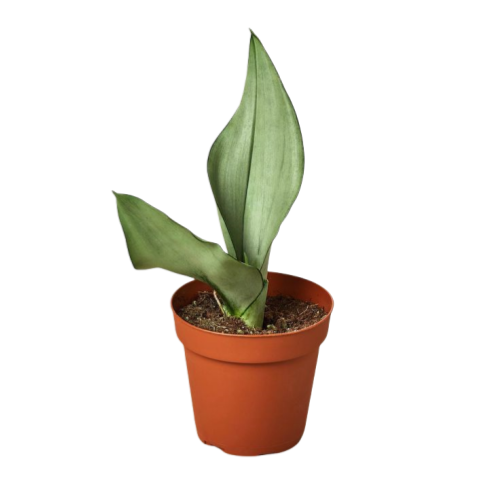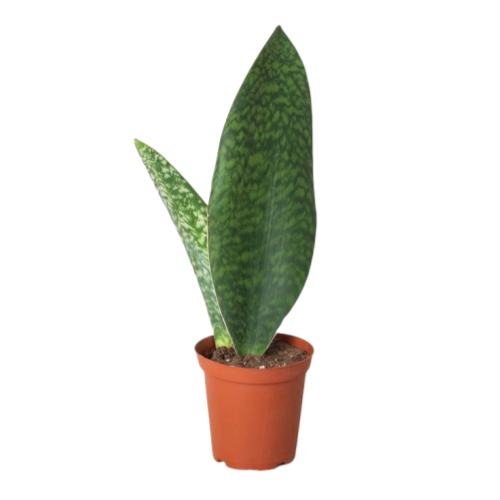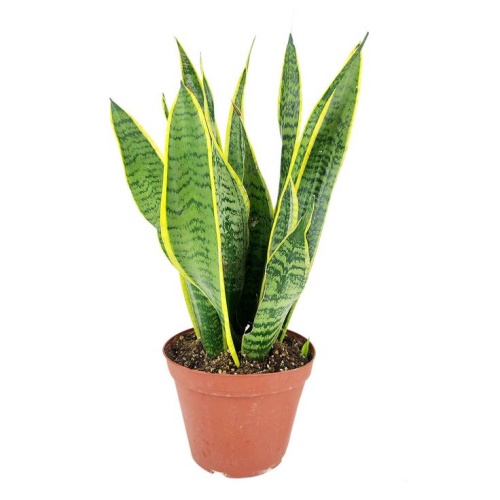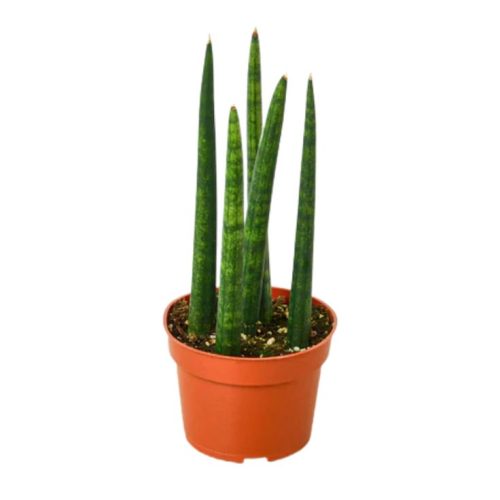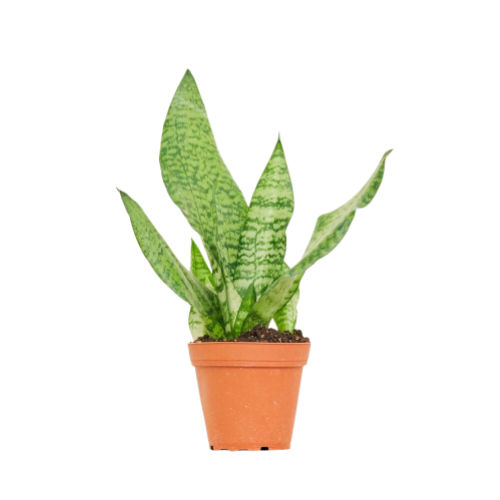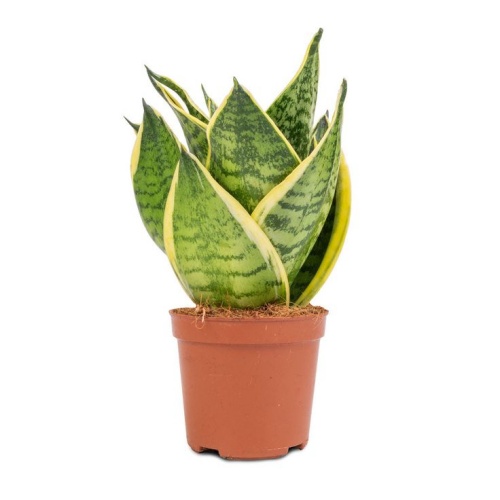Sasevier L Rubia
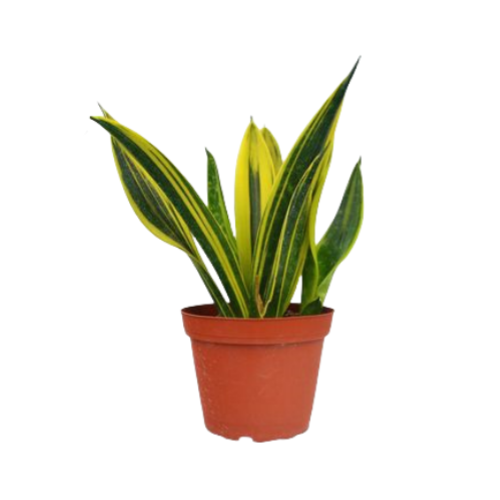
- Botanical Name: Sansevieria trifasciata ‘La Rubia’
- Family Name: Asparaceaceae
- Zimayambira: 2-5 Inch
- Kutentha: 12 ℃~29℃
- Others: Bright indirect light, drought-tolerant.
Kulemeletsa
Mafotokozedwe Akatundu
Tropical Stripes & Style: The Sansevieria La Rubia’s Low-Effort, High-Impact Greenery
The Striped Wonder: La Rubia’s Tropical Charm
Sansevieria La Rubia, scientifically known as Sansevieria trifasciata ‘La Rubia’, originates from the tropical regions of West Africa, ranging from eastern Nigeria to the Congo, and is also naturally found in Madagascar and India.
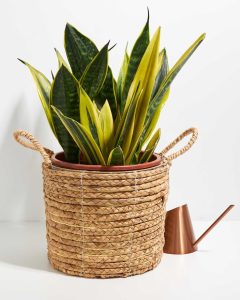
Sasevier L Rubia
This plant is renowned for its striking yellow and dark green striped leaves. The sword-shaped leaves feature a unique combination of yellow and green, with each plant’s leaves exhibiting a distinctive color and stripe pattern, making each Sansevieria La Rubia truly one-of-a-kind. In terms of leaf morphology, they typically grow upright, forming a basal rosette, with long and narrow leaves. The edges are usually green, while the center of the leaves display silver-gray or yellow stripes, making Sasevier L Rubia Imani pakati pa mbewu zambiri chifukwa cha mtundu wake wapadera ndi mawonekedwe ake.
The Low-Maintenance Diva: Sansevieria La Rubia’s Easygoing Green Lifestyle
-
Chosalemera: Sasevier L Rubia amakonda zowala, molunjika pang'ono ndipo amatha kusintha malo owala, koma kuwala kumathandizira kusungitsa masamba ake. Dzuwa lotsogolera liyenera kupewedwa monga limawonera masamba.
-
Madzi: Chomera ichi ndi chololera chilala, ndipo kuthirira kuyenera kuchitika nthaka ikaphwa. M'madera wamba, izi zitha kutanthauza kuthirira masabata anayi aliwonse, koma pafupipafupi kumatha kusiyanasiyana malinga ndi nyengo, malo, ndi malo opepuka. Kuthirira pafupipafupi kumatha kufunikira nthawi yotentha.
-
Dongo: Zimafunikira dothi lophika bwino, monga momwe limagwiritsira ntchito cacti kapena succulents, kuti muchepetse zinthu zake zachilengedwe. Kusakaniza mchenga, perlite, ndi zinthu zachilengedwe kumathandizira kupereka zowerengera ndi michere.
-
Kutentha ndi chinyezi: Sasevier L Rsia amakula bwino mu kutentha kwa 60 ° F mpaka 85 ° C (16 ° C mpaka 2) ndipo amatha kulekerera chinyezi chochepa. Ndisankho labwino kwambiri pakuuma kwa mpweya chifukwa sichimafuna chinyezi chambiri.
-
Kuyamika: Apply a balanced liquid fertilizer every 4-6 weeks during the growing season (spring and summer). Reduce fertilization in the fall and winter when the plant’s growth slows down.
-
Kudulira ndi kukonza: Sansevieria La Rubia requires minimal pruning. Remove any yellowing or damaged leaves to maintain the plant’s appearance and health. Repot every 2-3 years to refresh the soil and accommodate its growth.
Oyang'anira obiriwira: Kukonzanso kotsika, kalembedwe ka sanjirias
Sasevier L Rutia ndi chomera chofanana, monga Shesevaria Trifasciata ndi Goldeviersia Trifasciata ndi Golden Hahnii, amachokera ku zigawo zakumadzulo kwa Africa ndi madera akumwera ku Asia. Zomera izi zimakondedwa chifukwa cha kusinthasintha kwawo komanso kukonza kochepa. Amatha kusintha mikhalidwe yowunikira komanso zachilengedwe, kuchokera ku dzuwa lowala lowala mpaka malo owala pang'ono, ndipo ali ndi zosowa zamadzi zochepa chifukwa cha masamba awo ocheperako, a seray omwe amasunga madzi, monga maulendo osowa.
These Sansevieria species are known for their unique aesthetic appeal. Their long, upright leaves range in color from green to nearly black, often adorned with distinctive patterns, such as the yellow edges of Short Leaf Sansevieria (Sansevieria trifasciata ‘Hahnii’) and the silver leaves of Silver Short Leaf Sansevieria (Sansevieria trifasciata ‘Laurentii’). The decorative appearance of these plants makes them a popular choice for indoor decoration.
Beyond their beauty, Sansevieria La Rubia and similar varieties are also favored for their air-purifying capabilities and oxygen release at night. NASA’s clean air studies have shown that these plants can filter toxins such as formaldehyde, benzene, and trichloroethylene, helping to improve indoor air quality. They release oxygen through photosynthesis at night, making them suitable for placement in bedrooms to support better sleep. These health benefits, coupled with their easy-care characteristics, make these plants an ideal choice for homes and offices.





